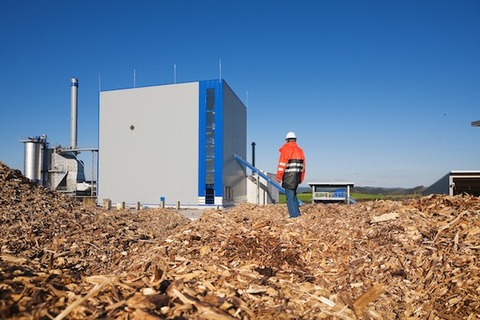Renewable energy roadmap
4 Mar 2013

The UK is making “significant progress” with plans to increase renewable energy supply, according to the 2012 update to the Renewable Energy Roadmap published by energy secretary Edward Davey.
In the 12 months to July 2012, there was a 27% increase in overall renewable electricity generated, and a 40% increase over the same period in renewable electricity capacity.
Renewables now represent over 10% of all electricity generated, helped by a 60% increase of offshore wind capacity to 2.5 gigawatts, and a five-fold increase in solar photovoltaic capacity.
The Roadmap, said Davey, shows that the UK is on track to meet its first interim target on the way to the ambitious European target to source 15% of all energy from renewable sources by 2020.
“Renewable energy is increasingly powering the UK’s grid, and the economy too,” he commented. “”It’s a fantastic achievement that more than 10% of our power now comes from renewables, given the point from which we started.”
But not everyone is convinced that things are moving in the right direction.
In its own roadmap, the Anaerobic Digestion and Biogas Association identified several barriers to AD in the UK, where the industry now has 92 plants outside the water sector - up from 69 in late 2011.
“Delivering the coalition’s commitment to a huge increase in energy from waste though anaerobic digestion requires a much more focussed effort,” said Charlotte Morton, ADBA chief executive, who believes that there is a need for much greater coordination across the government if it to realise the full potential of AD technology.
“Waste policy needs to maximise the organic material available for AD, bioenergy policy needs to support good practice and compare technologies by common criteria, and biomethane in transport needs a more attractive framework of support,” Morton explained.
On a more positive note, a DECC decision not to apply a supplier cap for biomass power is being claimed by the Renewable Energy Association (REA) as a big win for the biomass power industry.
In-line with REA lobbying, Ofgem has opted to monitor likely deployment levels up to 400MW. If this level is exceeded, DECC said it will now consider launching a new consultation on restricting further deployment.
The REA also welcomed a related decision to permanently exclude certified CHP (combined heat and power) projects from this monitoring process
Instead of implementing legislation that would have stopped investment in its tracks, DECC is taking more of a ‘wait and see’ approach, with the option of consulting if deployment exceeds 400MW,” said REA chief executive Gaynor Hartnell.
Meanwhile, Drax plc has secured committed financing to support group plans to transform its 4,000MW electricity-generation operation to burn mainly biomass.
The finance is to help Drax re-engineer some or all of the six 660MW generators coal-fired units at its Yorkshire power station, which can supply around 7% of UK electricity demand.
The backing now includes a £100-million amortising term loan facility with the UK Green Investment Bank, and a £400-million revolving credit facility, maturing in April 2016, that will replace an existing £310-million revolving credit facility.
The new financing agreements indicates support from the investment community for the biomass strategy, according to Drax finance director Tony Quinlan, who welcomed, in particular, the involvement of the UK Green Investment Bank.
“We are making very good progress with our project to transform the largest coal plant in the UK into an electricity generator fuelled predominantly by sustainable biomass” commented Quinlan.

